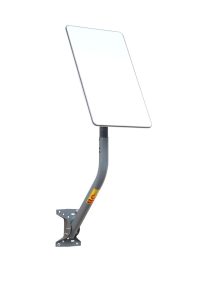The Future of Satellites: Advancements and Innovations in Space Technology
The future of satellites is looking bright with advancements in space technology, new innovations, and a growing demand for satellite services. Satellites have been a crucial part of our daily lives, providing us with navigation, communication, weather forecasting, and entertainment. As technology continues to evolve, we can expect to see significant improvements in satellite design, launch, and operation.
Current State of Satellite Technology
Satellite technology has come a long way since the launch of the first artificial satellite, Sputnik, in 1957. Today, there are over 5,000 satellites in orbit around the Earth, providing a wide range of services. The current state of satellite technology is characterized by the use of geostationary satellites, which are placed in a fixed orbit above the equator and provide coverage to a specific region. However, with the increasing demand for satellite services, there is a need for more advanced and efficient satellite systems.
One of the major challenges facing the satellite industry is the issue of space debris. As the number of satellites in orbit increases, so does the risk of collisions and the accumulation of debris. This can have serious consequences, including the loss of satellites and the creation of a hazardous environment for future space missions. To address this issue, satellite operators and manufacturers are working on developing more sustainable and responsible practices, such as designing satellites that can be easily de-orbited and disposed of at the end of their life.
Advancements in Satellite Design and Launch
There are several advancements in satellite design and launch that are expected to shape the future of the industry. One of the most significant developments is the use of small satellites, also known as cubesats. These satellites are smaller, lighter, and less expensive than traditional satellites, making them more accessible to a wider range of users. Small satellites are also more agile and can be launched into orbit more quickly, which makes them ideal for applications such as Earth observation and communication.
Another area of advancement is the development of reusable launch vehicles. Companies such as SpaceX and Blue Origin are working on creating launch vehicles that can be reused multiple times, which could significantly reduce the cost of access to space. This could make it possible for more satellites to be launched into orbit, which would increase the availability of satellite services and reduce the cost of launching new satellites.
In addition to these advancements, there are also new materials and technologies being developed that could improve the performance and efficiency of satellites. For example, the use of advanced propulsion systems, such as electric propulsion, could allow satellites to operate for longer periods of time and to travel farther distances. The development of new materials, such as advanced composites and nanomaterials, could also lead to the creation of lighter and more durable satellites.
Future of Satellite Services
The future of satellite services is looking bright, with a growing demand for satellite-based connectivity, navigation, and Earth observation. One of the most significant trends is the increasing use of satellites for communication, particularly in areas where terrestrial infrastructure is limited or non-existent. Satellite-based communication systems, such as satellite phones and satellite broadband, are becoming more popular, especially in remote and underserved communities.
Another area of growth is the use of satellites for Earth observation. Satellites are being used to monitor the environment, track climate change, and predict weather patterns. The use of satellites for Earth observation is also becoming more important for applications such as agriculture, forestry, and disaster response. The development of new satellite technologies, such as hyperspectral imaging and synthetic aperture radar, is also expected to improve the accuracy and resolution of Earth observation data.
In addition to these trends, there are also new and innovative applications of satellite technology being developed, such as satellite-based navigation and timing. The use of satellites for navigation and timing is becoming more important, particularly in areas such as aviation, maritime, and transportation. The development of new satellite-based navigation systems, such as the European Union’s Galileo system, is also expected to improve the accuracy and reliability of navigation data.
Conclusion
In conclusion, the future of satellites is looking bright, with advancements in space technology, new innovations, and a growing demand for satellite services. As the industry continues to evolve, we can expect to see significant improvements in satellite design, launch, and operation. The development of new materials and technologies, such as small satellites, reusable launch vehicles, and advanced propulsion systems, will also play a crucial role in shaping the future of the industry.
However, there are also challenges that need to be addressed, such as the issue of space debris and the need for more sustainable and responsible practices. As the demand for satellite services continues to grow, it is essential that the industry works together to develop more efficient and environmentally friendly satellite systems. With the right investments and innovations, the future of satellites is likely to be bright, and we can expect to see significant advancements in the years to come.


